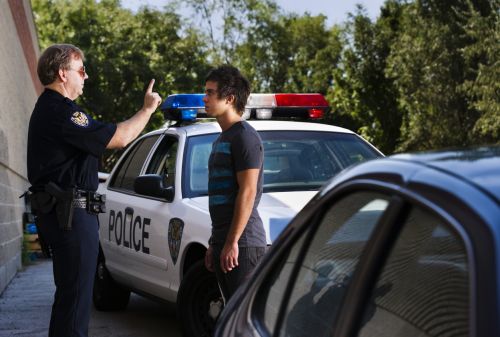



When someone is suspected of Driving While Intoxicated (DWI) in New Jersey, police officers typically administer Standardized Field Sobriety Tests to assess whether the driver is under the influence of alcohol. These tests are used to establish probable cause that a driver is intoxicated, which can lead to the driver being arrested and charged with DWI.
Law enforcement officers typically use a combination of Standardized Field Sobriety Tests to evaluate whether a suspect is under the influence of alcohol. The National Highway Traffic Safety Administration (NHTSA) has endorsed three Standardized Field Sobriety Tests to assess whether a driver is under the influence of alcohol. These are the One Leg Stand (OLS) test, the Walk and Turn Test, and the Horizontal Gaze Nystagmus (HGN) Test. To ensure an accurate result, the tests must be conducted the same way, every time. In New Jersey, these tests can be used to establish probable cause to arrest someone for drunk driving, but cannot be used to establish actual impairment.
To conduct the DWI eye test, formally known as the horizontal gaze nystagmus, or HGN test, a police officer holds their finger, a pen, or another object 12 to 15 inches in front of the suspect’s face and moves it slowly towards the suspect’s ear while the suspect follows the object moving just their eyes.
“Horizontal gaze nystagmus” refers to an involuntary “jerking” of a person’s eye as it moves from side to side. While conducting the HGN test, the officer is looking for three “signs” or “clues” that could indicate that the driver is under the influence of alcohol (the DWI eye test has not been approved to evaluate whether a driver is under the influence of drugs):
One point is assessed for the presence of each of these characteristics in each eye, with a maximum of 6 points assessed. A score of four points or higher establishes a likelihood that the driver is under the influence of alcohol and has a blood alcohol concentration (BAC) of .08% or greater.
For the DWI HGN test to be accurate, the suspect must look straight ahead and keep the head still while following the object and focusing on it with the eyes. The officer should receive acknowledgement from the suspect that the object is at a comfortable distance before administering the test. If the suspect is wearing eyeglasses, they should be removed so the officer can make a more accurate determination of the total points. However, if the suspect cannot see the object without glasses, they may be left on. Contacts should be removed to avoid their being dislodged when the eyes are at the maximum deviation and to prevent damage to the suspect’s eyes.
The DWI HGN test is not accurate for individuals who only have vision in one eye. If the suspect has a “lazy eye” the officer should test one eye while the other eye is covered, then test the other eye. The HGN test is not accurate for individuals who are colorblind, as they have a higher likelihood of a pathological nystagmus, which is normal and natural for a person with that condition. A small percentage (3% to 4%) of the population exhibits a pathological nystagmus, which could be caused by a neurological disorder, brain damage, epilepsy, or other disorders.
A suspect who was involved in an accident and sustained a concussion might also exhibit a pathological nystagmus, which would invalidate the test. The suspect must not tilt their head to the side at any time during the test, and the officer should move the object slowly, taking approximately two seconds to move it from directly in front of the suspect to maximum deviation.
While horizontal gaze nystagmus is a “clue” to intoxication, the DWI eye test is far from foolproof. While alcohol consumption may magnify the nystagmus effect, everyone experiences nystagmus to some degree. Factors other than alcohol consumption can also cause nystagmus, such as illness, injury, medical conditions, and fatigue.
The inherent flaws of the DWI HGN test are compounded by the fact that many officers do not administer the test properly. For example, the HGN test results could be invalidated if the driver was sitting in the vehicle and their head was turned, if their head was not upright, or if they were facing traffic or flashing lights when the test was administered. Many New Jersey drivers incorrectly assume that poor performance on the DWI HGN test means they will be convicted, but that is just not true. In New Jersey, the results of the DWI HGN test are not admissible as evidence of intoxication. The test can only be used to establish probable cause.
New Jersey DWI defense attorney John C. Iannelli has been practicing law since 1992. He can evaluate your situation and provide valuable legal advice and guidance to protect your rights. Contact Iannelli Law today to schedule an appointment to discuss your situation with an experienced New Jersey criminal defense attorney.
© 2025 Law Offices of John Iannelli
| View Our Disclaimer | Privacy Policy
Law Firm Website Design by The Modern Firm